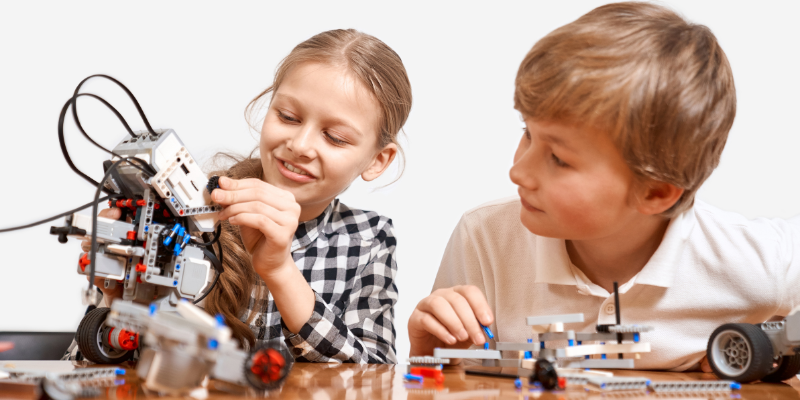STEM education, focusing on Science, Technology, Engineering, and Mathematics, is an essential approach that enhances crucial skills in children. However, motivating and effectively reinforcing knowledge with traditional learning methods can sometimes be challenging. Fortunately, in recent years, a game-based learning approach in STEM education has emerged as a solution to make learning more enjoyable and effective for children. In this blog, we will explore the game-based learning approach in STEM education and how it enables children to experience more active and conscious learning processes.
Game-based learning and STEM education:
Firstly, it is important to understand what game-based learning is and how it relates to STEM education. Game-based learning is an interactive method that allows children to learn while having fun. How is this approach integrated into STEM education, and why is it preferred? Let’s find out!
The impact of fun and learning:
Can learning be enjoyable? Absolutely! A fun learning environment for children makes learning more attractive and enables them to retain knowledge more effectively than traditional textbooks. The knowledge obtained through games can be more engaging and memorable. So, what are the advantages of a STEM education filled with games? Let’s explore!

Problem solving and creativity:
Games help children develop problem-solving and creativity skills. Exciting and thrilling tasks encourage them to use their mental abilities and come up with different solutions. This, in turn, helps them cope with challenges they may encounter in real life.
Collaborative learning experience:
Game-based learning also contributes to the development of collaborative and teamwork skills. Games encourage children to work together and exchange ideas, thus strengthening their social skills. As a result, children improve their communication skills and learn how to collaborate effectively with others.
Learning with Virtual and Augmented Reality: When technology is integrated into game-based learning, it makes the educational experience even more interesting and interactive. Virtual reality and augmented reality technologies enable children to experience events that are not possible in the real world, thus allowing for deeper learning experiences.
Assessment and feedback:
Game-based learning offers an effective method to assess children’s progress and provide feedback. Through games, children’s performance is tracked, and they receive personalized feedback to help them improve their skills.
Conclusion:
The game-based learning approach in STEM education keeps children’s interest in learning alive while enhancing their skills in science, technology, engineering, and mathematics. This engaging and effective learning method nurtures children’s curiosity, boosts their self-confidence, and prepares them as future leaders. Supporting the game-based learning approach in STEM education helps children discover their potential and contributes to their exciting journey into the world of science. It’s time to say hello to the future science heroes by initiating a STEM education enriched with game-based learning!
David Mitchell 🖋️
STEM Specialist


